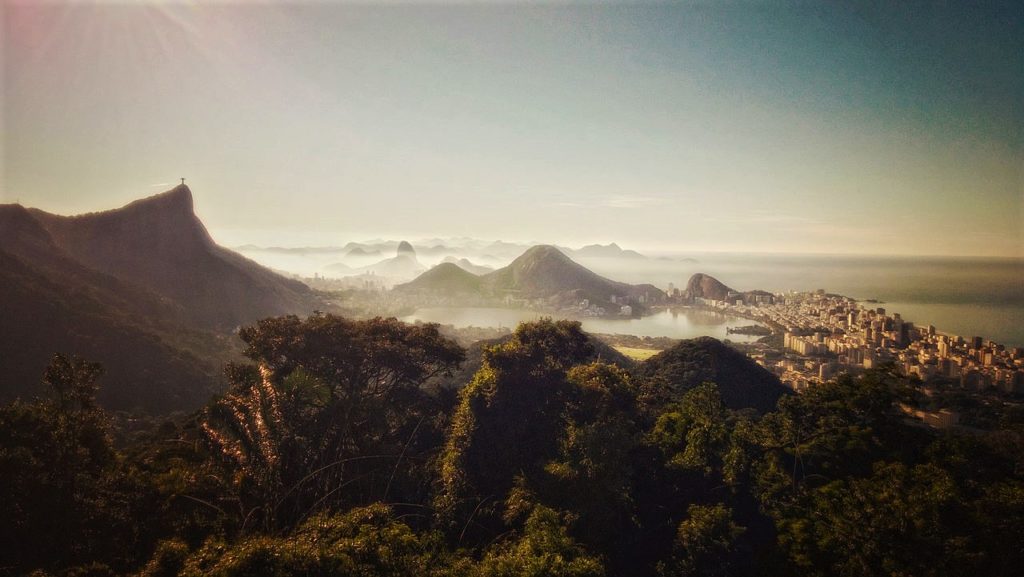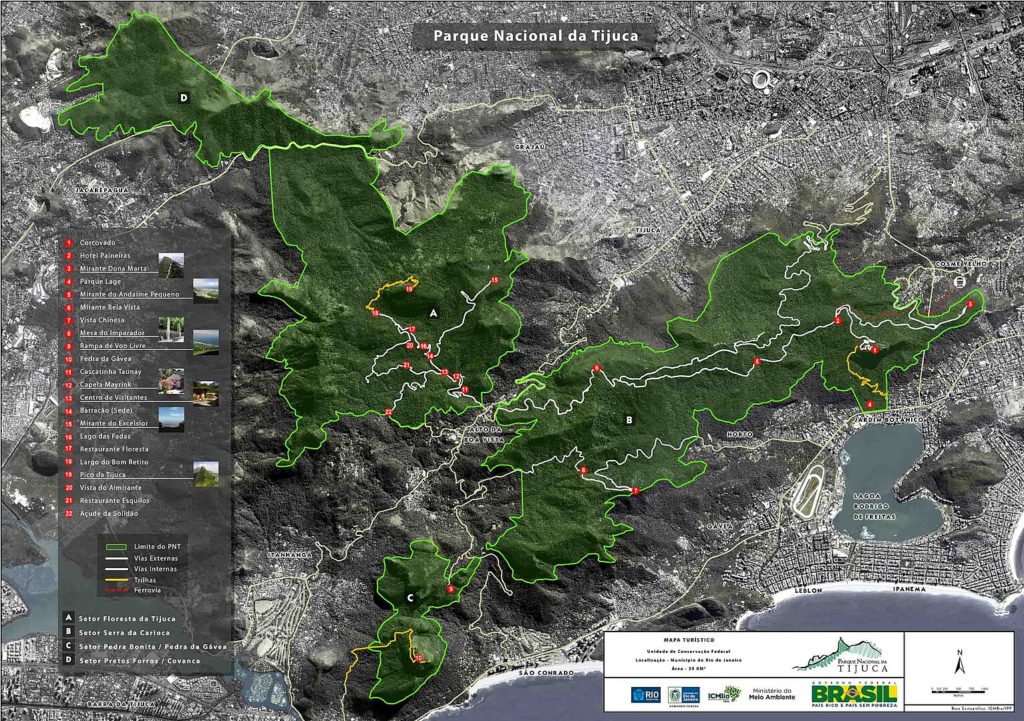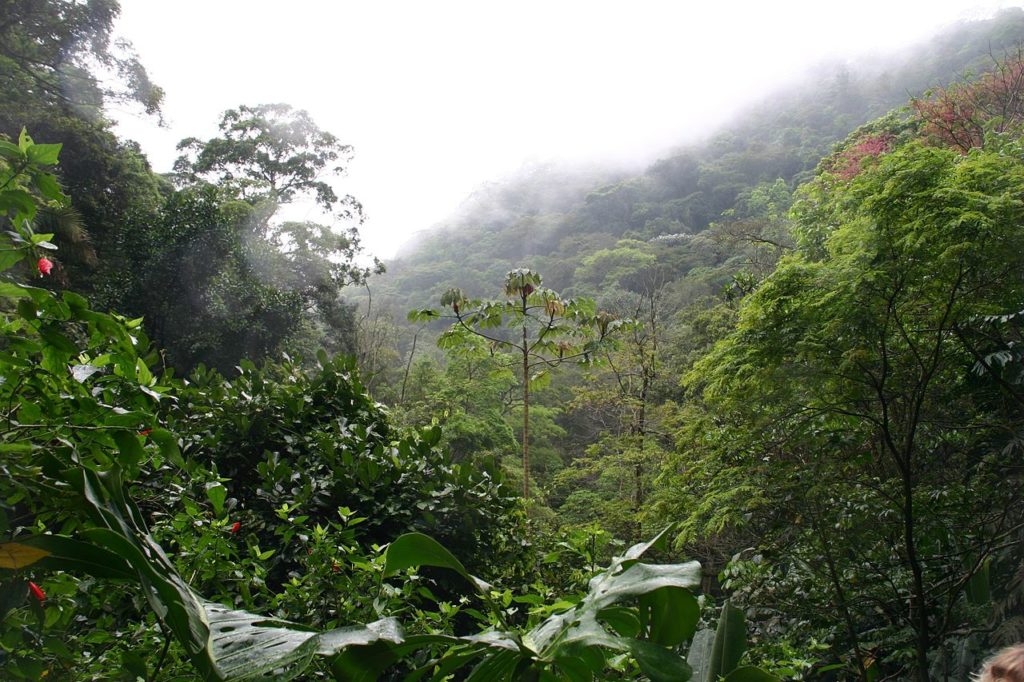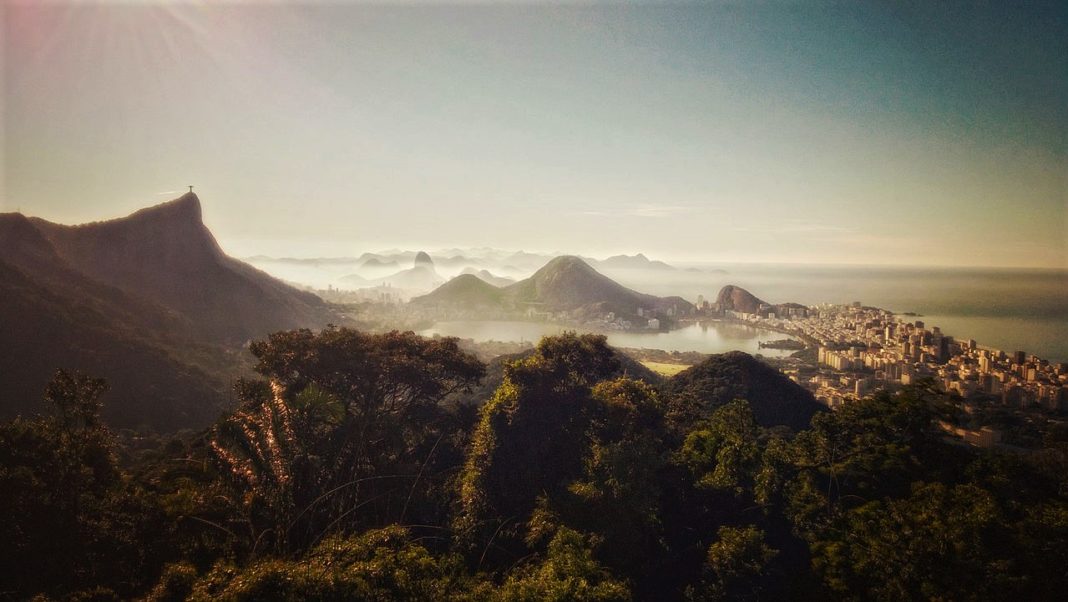The Tijuca National Park is an urban national park in the mountains of the city of Rio de Janeiro, Brazil. The park is part of the Atlantic Forest Biosphere Preserve, and is administered by the Chico Mendes Institute for Biodiversity Conservation (ICMBio).

Tijuca National Park is the world’s largest urban forest, covering some 39.58 square kilometers. An urban forest is a forest that is located within or near a city. It can provide a number of benefits to urban residents, including improved air and water quality, reduced noise pollution, and increased biodiversity. Tijuca National Park is home to a wide variety of plant and animal life, including over 1,600 species of plants and 350 species of animals.

Emperor Pedro II of Brazil established federal control over the area in 1861, and efforts began to restore the former forest on the bare slopes and abandoned fields. The re-planting of trees was carried out by 6 enslaved persons. In 1961, Tijuca Forest was declared a national park and in 2011, the Carioca Mosaic was established, including the park. In 2012, UNESCO designated the landscapes around Rio de Janeiro, including the park, as a World Heritage Site.

The park is also a popular destination for recreation, with hiking trails, waterfalls, and scenic viewpoints. Visitors to the park can also learn about the history of the Atlantic Forest and the importance of conservation.
According to the Internet















